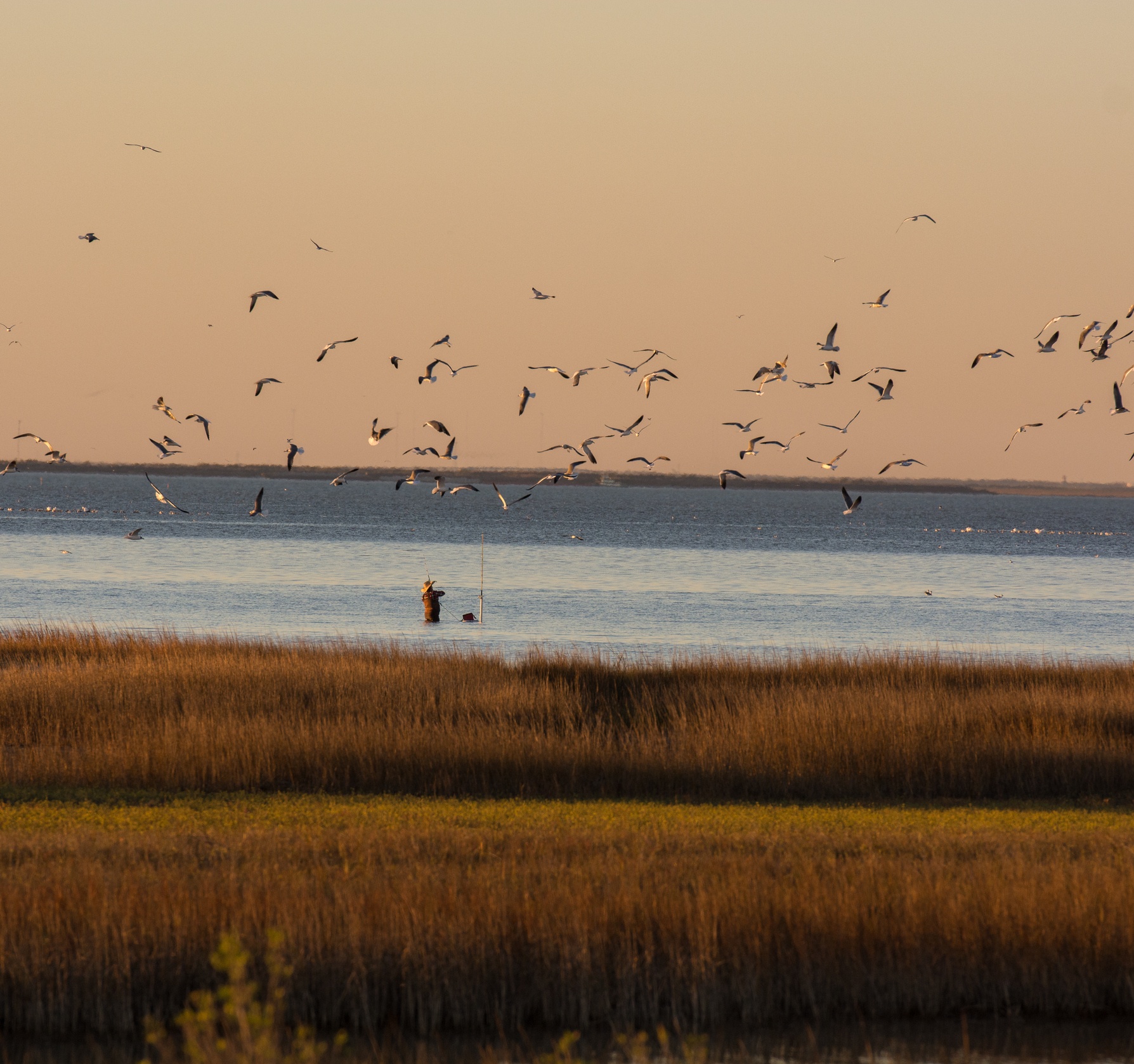
Most people associate hurricanes with high winds, intense rain and rapid flooding on land. But these storms can also change the chemistry of coastal waters. Such shifts are less visible than damage on land, but they can have dire consequences for marine life and coastal ocean ecosystems.
We are oceanographers who study the effects of ocean acidification, including on organisms like oysters and corals. In a recent study, we examined how stormwater runoff from Hurricane Harvey in 2017 affected the water chemistry of Galveston Bay and the health of the bay’s oyster reefs. We wanted to understand how extreme rainfall and runoff from hurricanes influenced acidification of bay waters, and how long these changes could last.
Our findings were startling. Hurricane Harvey, which generated massive rainfall in the Houston metropolitan area, delivered a huge pulse of fresh water into Galveston Bay. As a result, the bay was two to four times more acidic than normal for at least three weeks after the storm.
This made bay water corrosive enough to damage oyster shells in the estuary. Because oyster growth and recovery rely on many factors, it is hard to tie specific changes to acidification. However, increased acidification certainly would have made it harder for oyster reefs damaged by Hurricane Harvey to recover. And while our study focused on Galveston Bay, we suspect that similar processes may be occurring in other coastal areas.
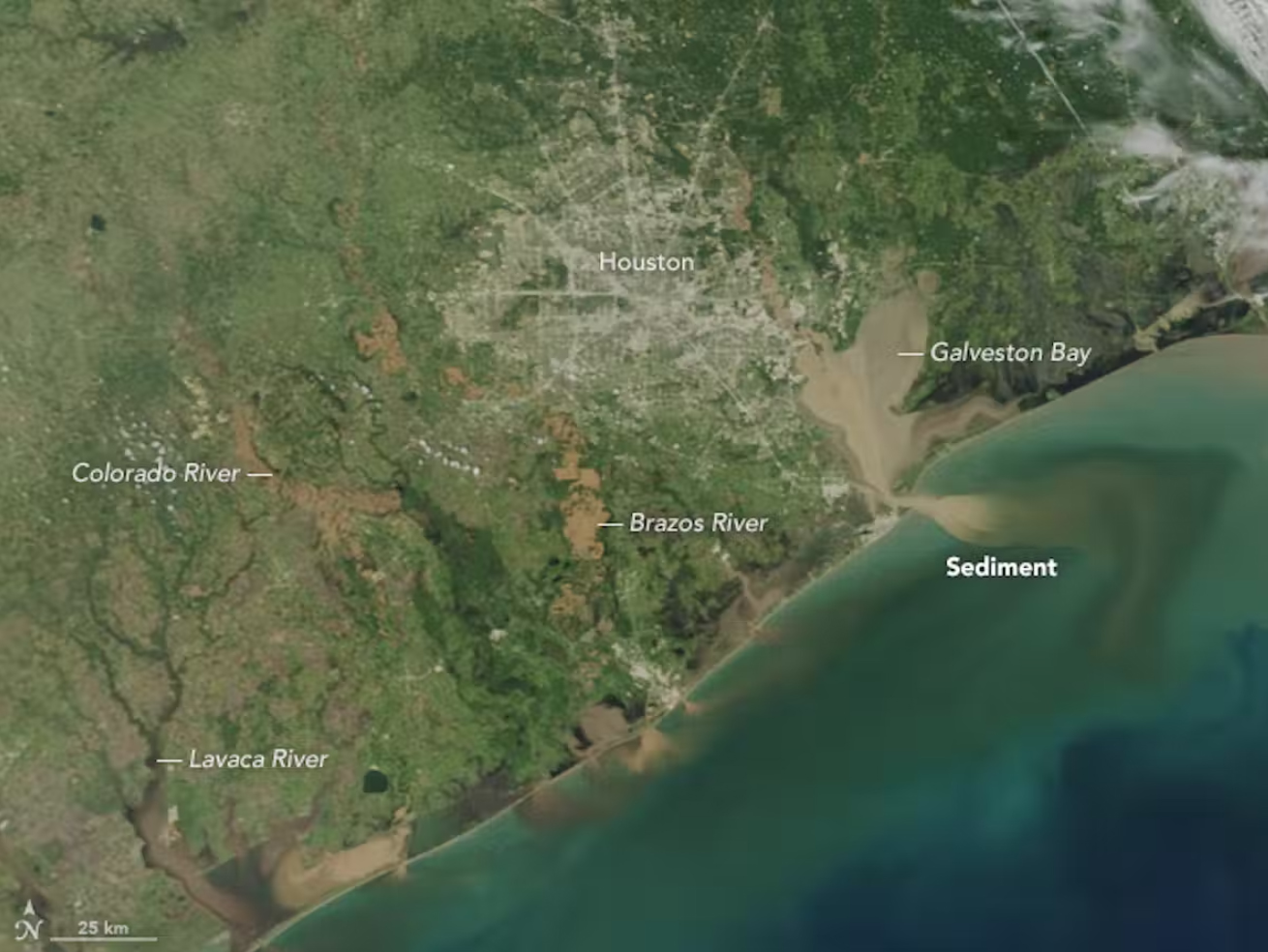
Vast quantities of water
Scientists predict that climate change will make hurricanes stronger and increase the amount of rain they produce over the next several decades. Changes in ocean chemistry, caused by runoff from these storms, are becoming an increasing threat to many marine ecosystems, especially coastal reefs built by oysters and corals.
Coastal estuaries like Galveston Bay, where rivers meet the sea, are some of the most productive ecosystems in the world. Galveston Bay is the largest bay on the Texas coast and one of the largest in the U.S.; it covers about 600 square miles, roughly half the size of Rhode Island. Its extensive oyster reefs provide about 9% of the national oyster harvest.
Hurricane Harvey, the wettest tropical cyclone in U.S. history, made landfall on the Texas coast as a Category 4 hurricane on Aug. 26, 2017. Harvey stalled at the coast for four days, sitting over both land and ocean.
Maintaining contact with warm Gulf of Mexico waters fueled the storm with both energy and rainfall, allowing it to persist and drop extreme amounts of rain directly onto Houston and surrounding areas — up to 50 inches in four days. All of that rain and floodwater had to go somewhere, and much of it flowed into Galveston Bay.
Climate change and ocean acidification
The ocean acidification issues that we study are a well-known effect related to climate change. Human activities, mainly burning fossil fuel, emit carbon dioxide into the atmosphere. The ocean absorbs about one-third of these emissions, which alters ocean chemistry, making seawater more acidic.
Acidification can harm many forms of marine life. It is especially dangerous for animals that build their shells and skeletons out of calcium carbonate, such as oysters and corals. As seawater becomes more acidic, it makes these structures harder to build and easier to erode.
Oysters fuse together as they grow, creating large rocklike underwater reefs that protect shorelines from wave erosion. These reefs provide habitat for other creatures, such as barnacles, anemones and mussels, which in turn serve as food sources for many fish species.
Rising atmospheric CO₂ levels are acidifying oceans worldwide. As our study shows, local events like tropical cyclones can add to global acidification.
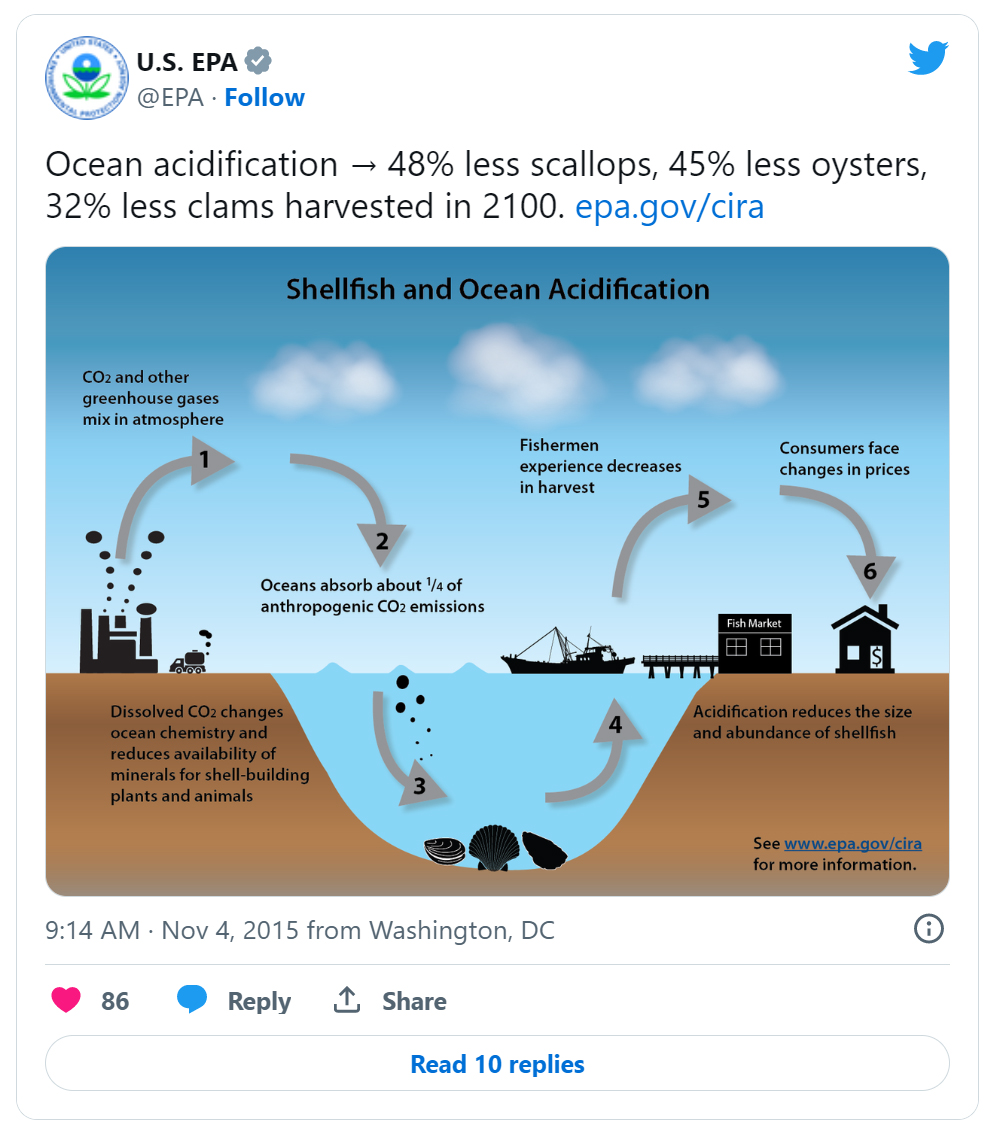
Stormwater from Harvey caused extreme coastal acidification
The main cause of the unprecedented acidification that occurred after Hurricane Harvey was the excessive amount of rainfall and runoff that entered Galveston Bay. To help manage large-scale flooding in the Houston area, the city released large volumes of water from reservoirs for more than two months after Harvey. These releases extended the time during which stormwater entered Galveston Bay and increased its acidity.
Scientists use the pH scale to measure how acidic or basic (alkaline) water is. A pH value of 7 is neutral; higher values are basic, and lower values are acidic. The pH scale is logarithmic, so a decrease of one full unit – say, from 8 to 7 – represents a tenfold increase in acidity.
Rainwater is more acidic than either river water or seawater, which pick up minerals from soil that are slightly basic and can balance out absorbed carbon dioxide from the atmosphere. Rainwater’s pH is around 5.6, compared with between 6.5 and 8.2 for rivers and about 8.1 for seawater.
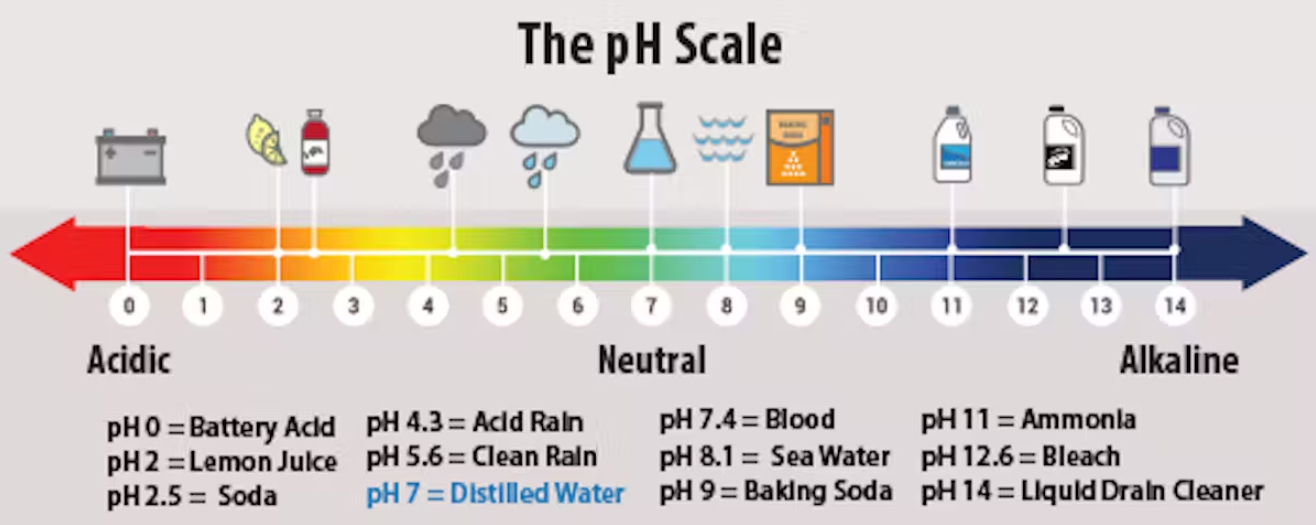
Galveston Bay contains a mix of fresh water from rivers and salty seawater from the Gulf of Mexico — oysters’ preferred habitat. We collected water samples in the bay two weeks after Harvey and found that the bay was made up almost entirely of river water and rainwater from the storm.
Since rainwater, river water and seawater all have different chemistries, we were able to calculate that rainwater made up almost 50% of the water in the bay. This means that acidic rainwater from Harvey replaced the basic seawater within the bay after the storm. The average bay water pH had dropped from 8 to 7.6, a 2.5-fold increase in acidity. Some zones had pH even as low as 7.4 — four times more acidic than normal.
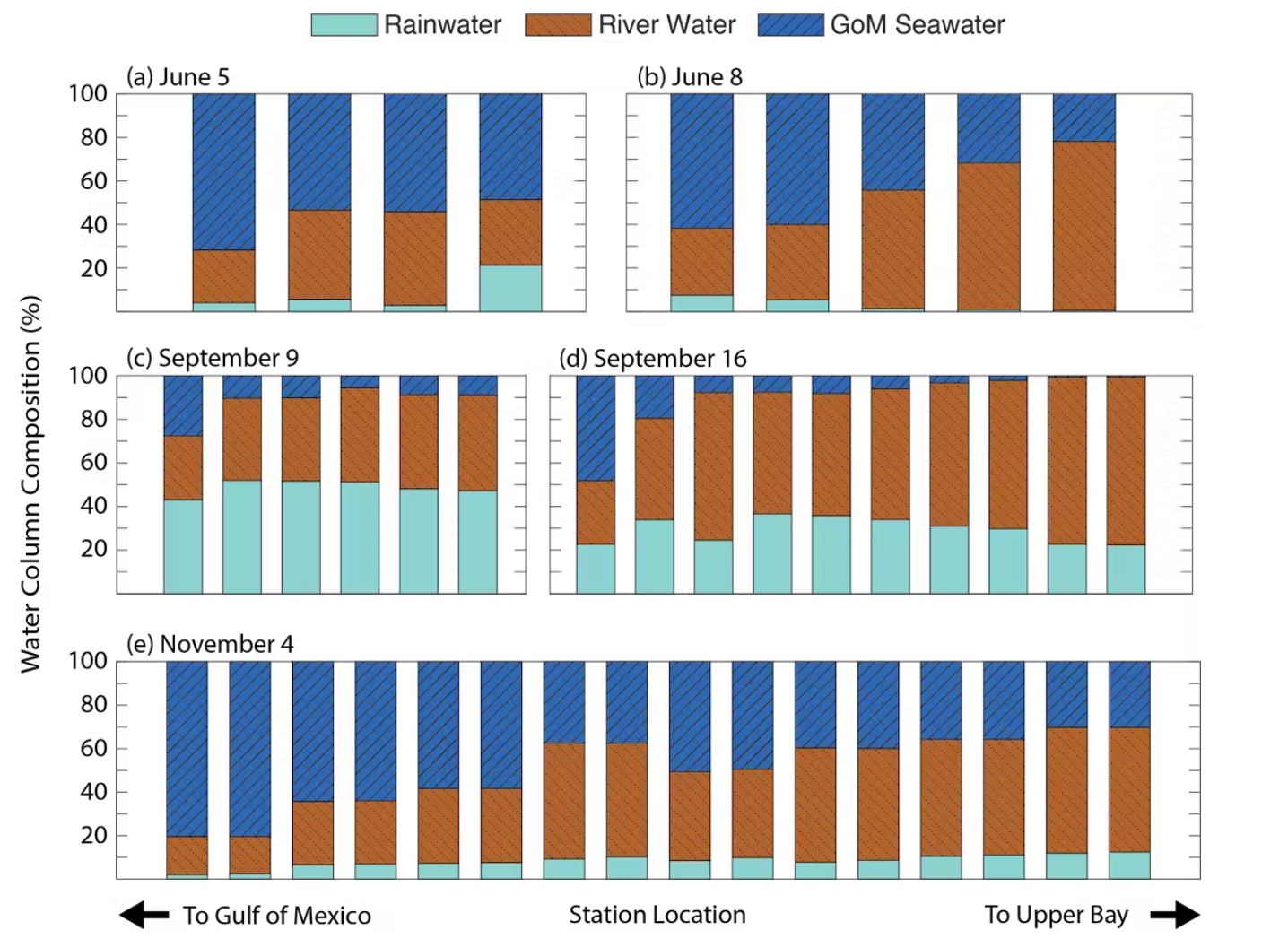
This extreme acidification lasted for more than three weeks. Bay waters became corrosive not only to more sensitive larval and juvenile oyster shells, but to adult oyster shells as well. Scientists had predicted that increasing CO₂ could cause this scale of coastal acidification but did not expect to see it until around the year 2100.
The fresh water from Harvey also caused a severe oyster die-off in the bay because oysters need slightly salty water to survive. Harvey struck in the middle of oyster spawning season, and acidification may have slowed reef recovery by making it harder for young oysters to form new shells. Officials at the Texas Parks and Wildlife Department have told us that four years later, in late 2021, some Galveston Bay oyster reefs still showed very low additions of new oysters.
Other coastal areas at risk
Only a few studies, including ours, have analyzed how tropical cyclones affect coastal acidification. In our view, however, it is highly possible that other storms have caused the kind of extreme acidification that we detected in the wake of Harvey.
We reviewed the 10 wettest tropical cyclones in the U.S. since 1900 and found that nine, including Harvey, caused large amounts of rain and flooding in coastal areas with bay or estuary ecosystems. Other storms didn’t produce as much rainfall as Harvey, but some of the affected bays were much smaller than Galveston Bay, so less rain would have been needed to replace seawater in the bay and cause a similar level of acidification to what Harvey produced.
We think that this likely has already occurred in other places struck by hurricanes but went unrecorded because scientists weren’t able to measure acidification before and after the storms. As climate change continues to make tropical cyclones larger and wetter, we see storm-induced acidification as a significant threat to coastal ecosystems.
This story was originally published by The Conversation.

